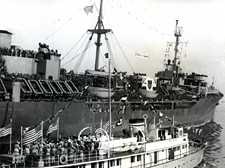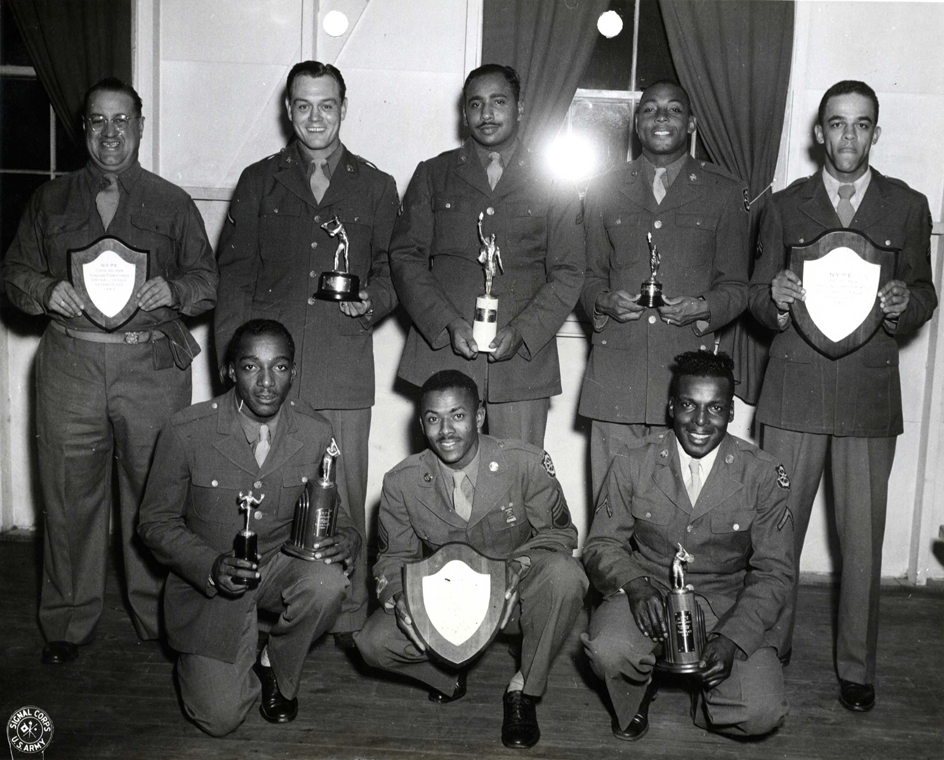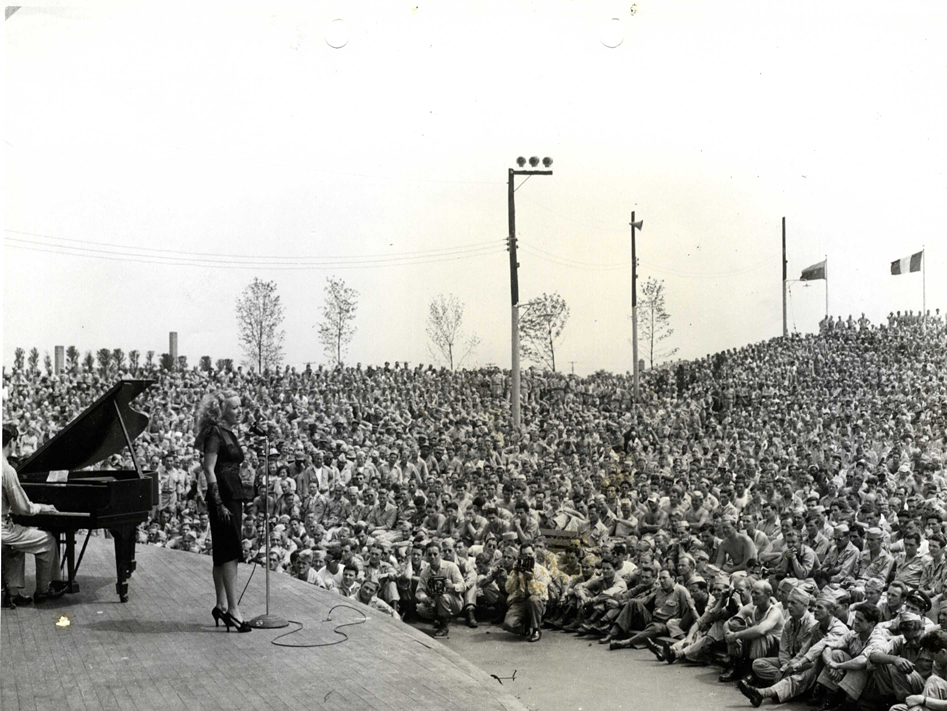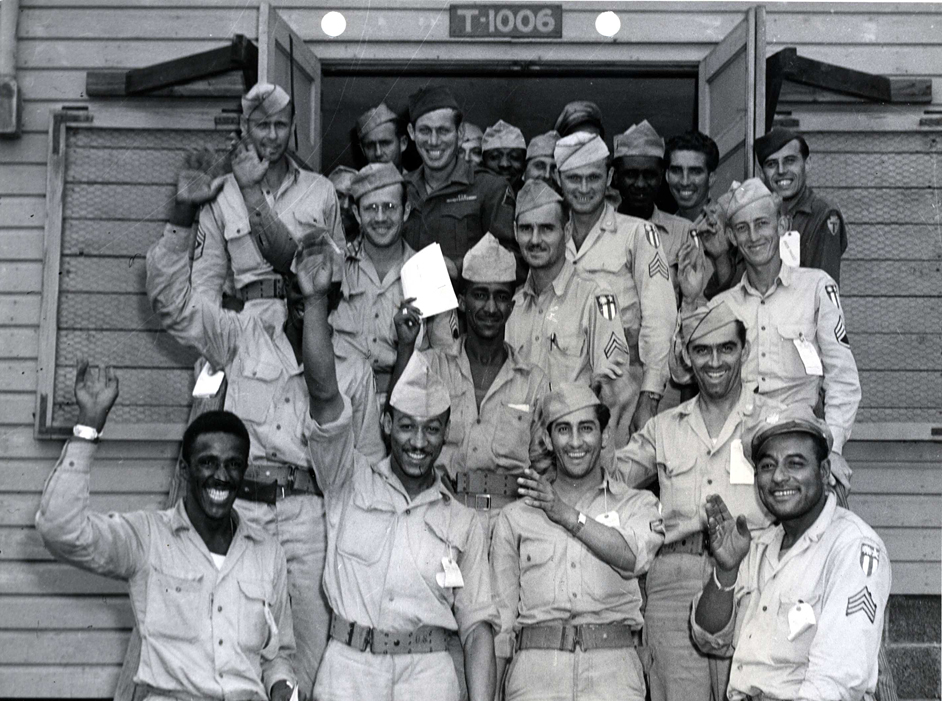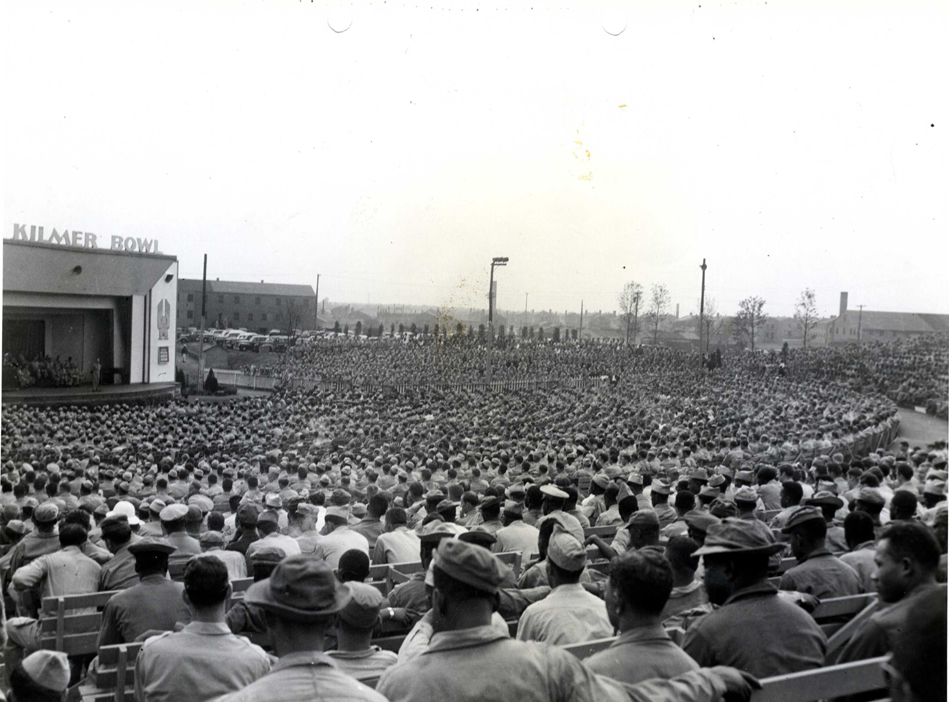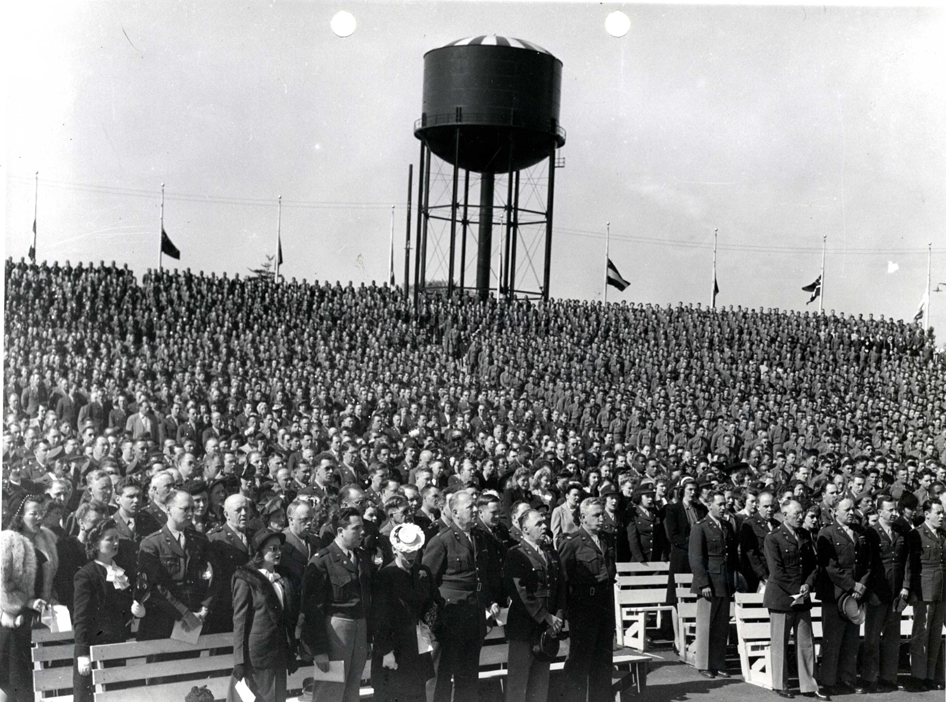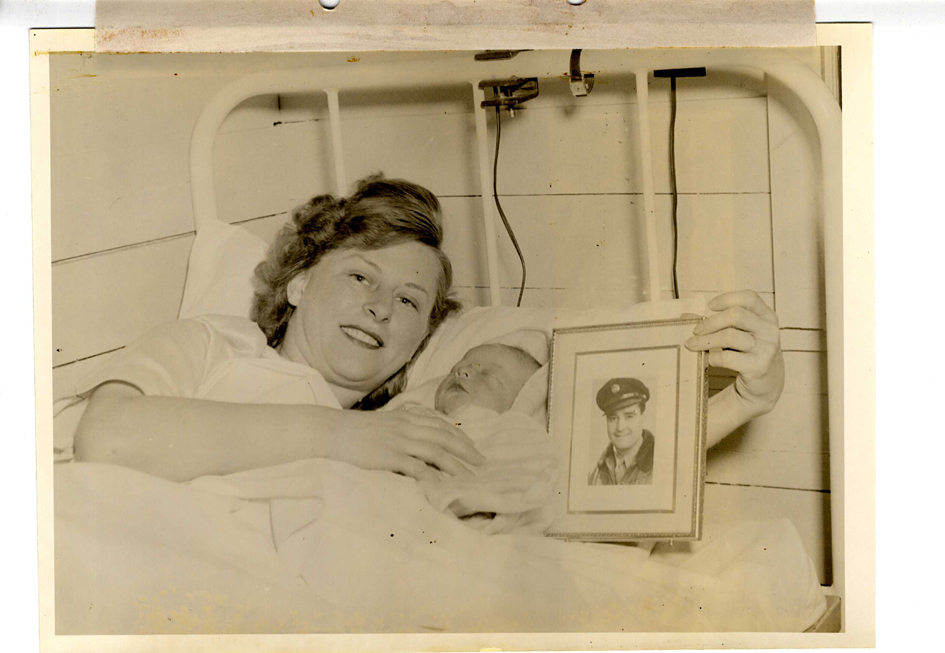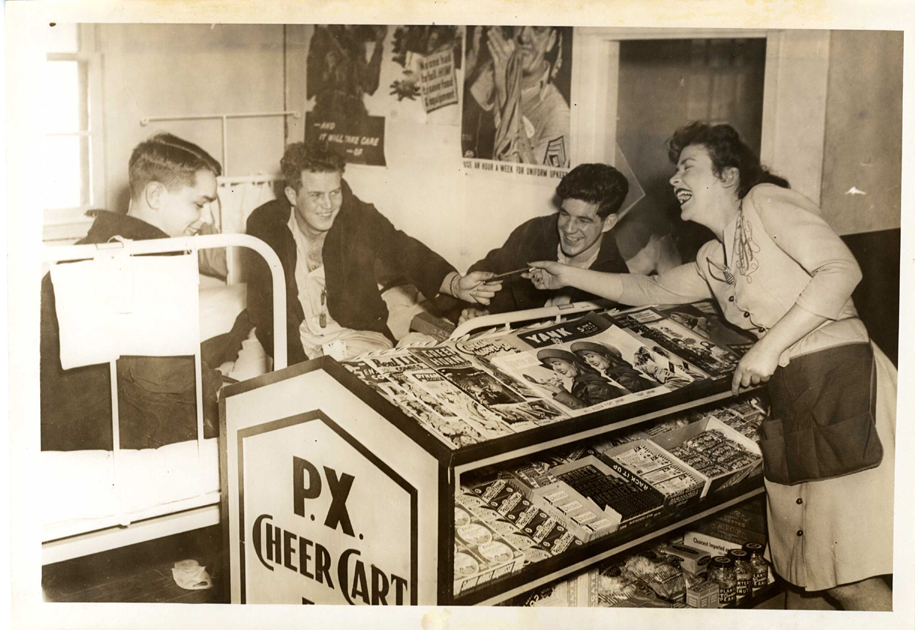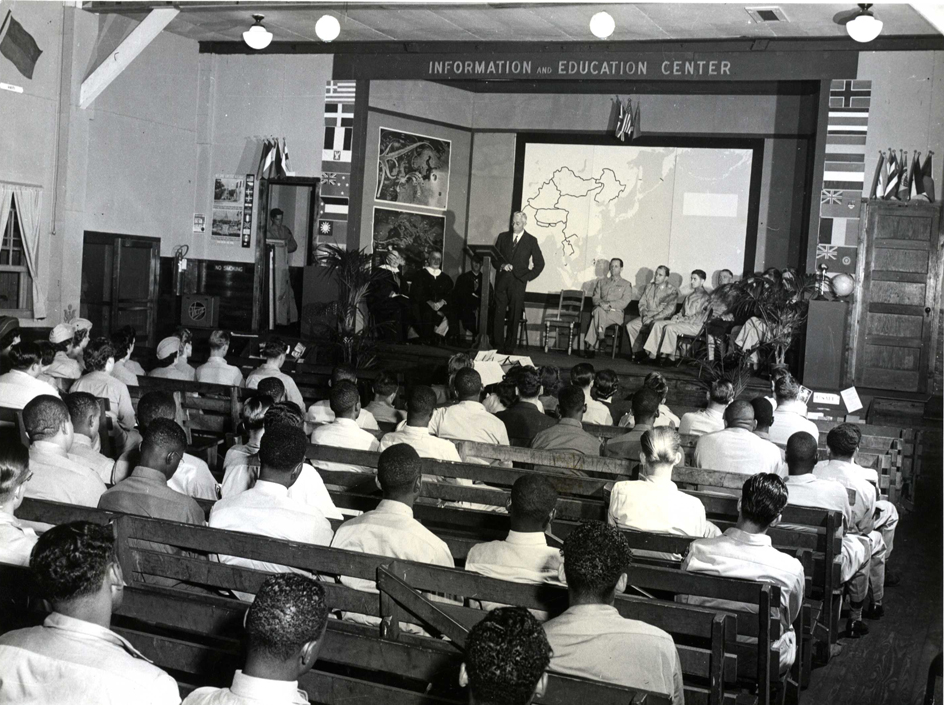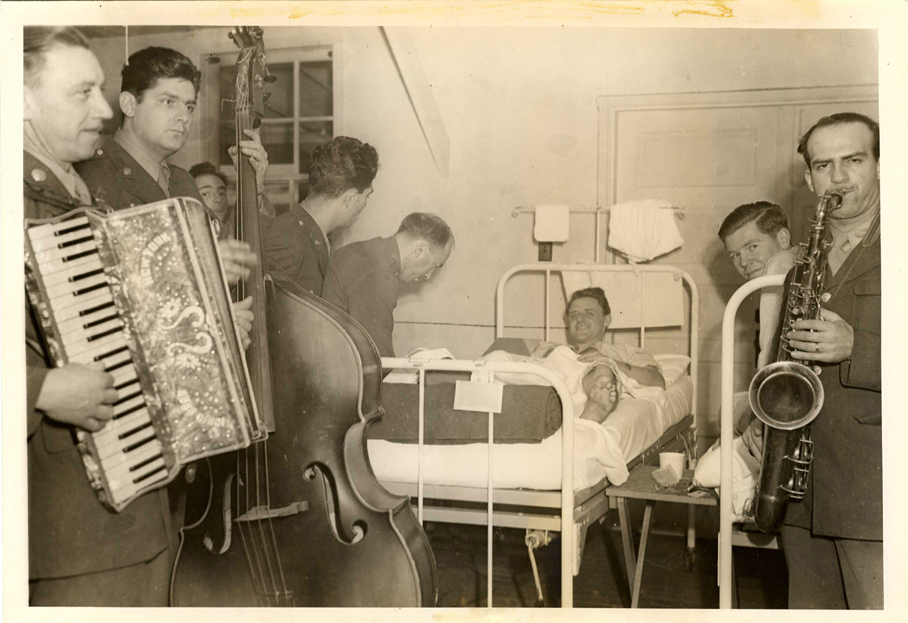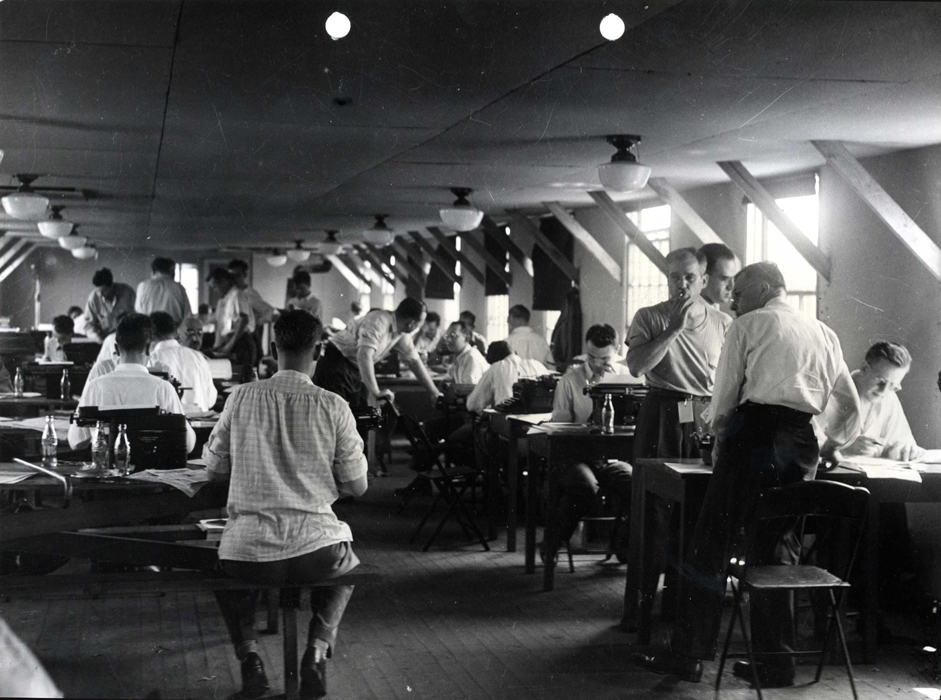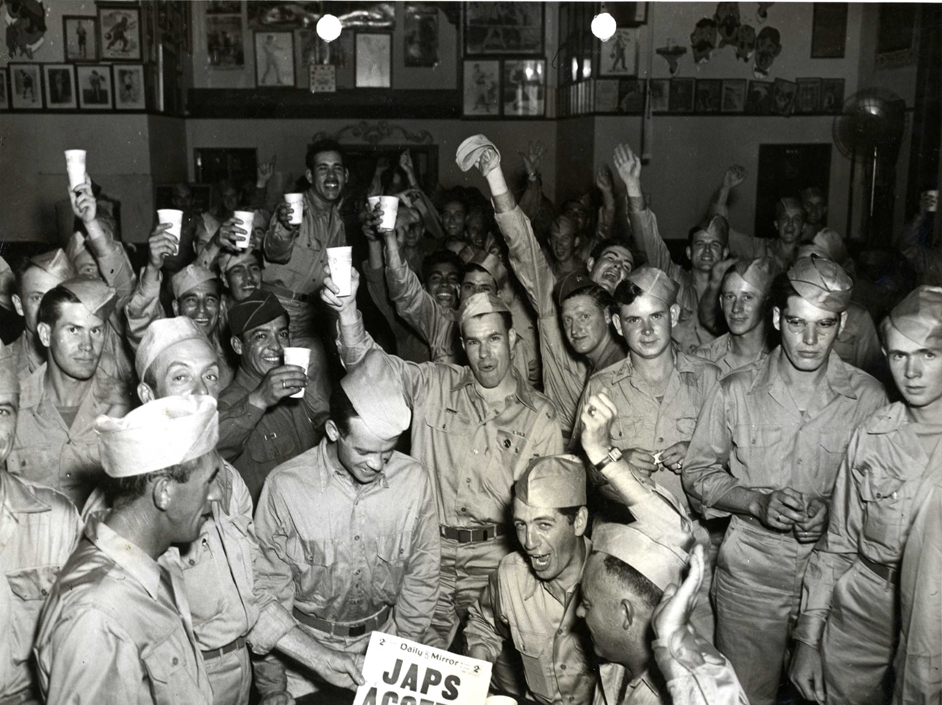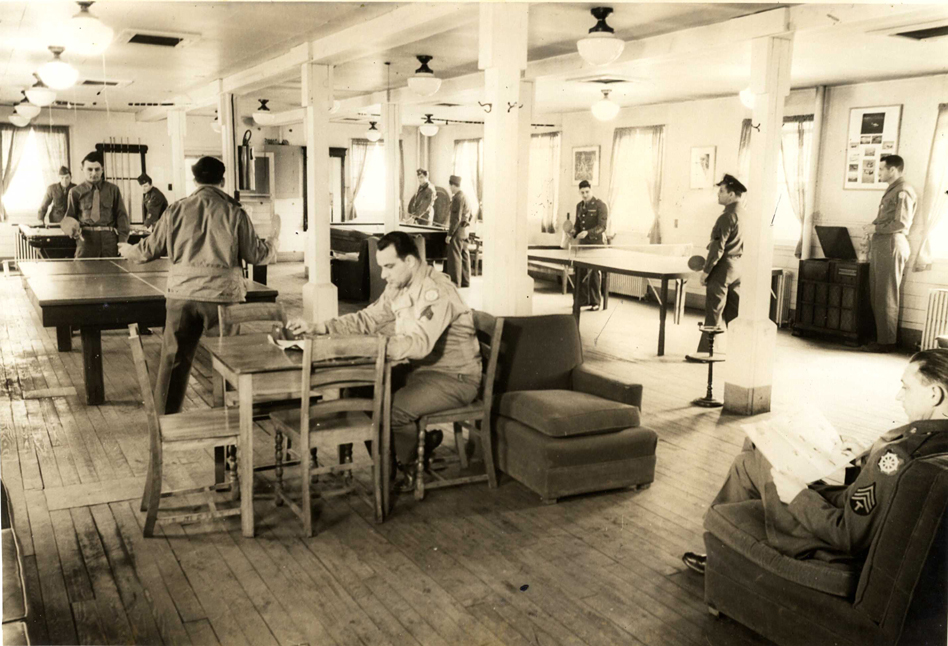
Camp Kilmer
Reader note: The photographs in this exhibit are taken from the Historical Record of Camp Kilmer, NJ, January - September, 1945, which is part of the National Archives - New York's Record Group 336, Records of the Office of the Chief of Transportation holdings. The photos are undated, but related reports and other documents in this Historical Record suggest that most were taken in 1945. Captions were filed with the photos for the most part, and we included the full text of these captions whenever possible.
Toward the end of 1941, with the threat of war imminent, the War Department chose a site between Edison and Piscataway, New Jersey as a staging area for troops. They named the camp for the poet Joyce Kilmer, who enlisted in the U.S. Army during World War I and was killed in action in the Aisne-Marne offensive. Construction began at Camp Kilmer in January 1942 and was completed in six months. The facility covered over 1,500 acres and consisted of 1,120 buildings, including rows of wooden barracks, seven chapels, five theaters, nine post exchanges, a gym, three libraries, four telephone centers, a post office, a 1,000-bed hospital, 28 miles of roadway, and about 11 railheads that fed into the main line.
From its opening in 1942 through the end of the War, Camp Kilmer was a major transportation hub for U.S. soldiers traveling to and from the European Theater. More than 20 divisions with over 1,300,000 servicemen staged at Camp Kilmer before being deployed to Europe. The site also hosted various Allied units before they were sent elsewhere for training.
Camp Kilmer operated more like a small city than a typical army facility, and servicemen enjoyed all types of entertainments and activities. The Camp had its own baseball and football teams and hosted exhibition games with professional clubs from New York. There were 20 softball diamonds, 30 volleyball courts, and 160 horseshoe courts available for recreation. The Camp had their own band and orchestra, and there were also dances and movies.
USO-Camp Shows put on productions of plays at Camp Kilmer, and the troops had visits from professional athletes and top Hollywood stars. Benny Goodman performed at the first radio program to be broadcast from the Camp on March 15 (1945?). As many as 21,000 returning troops a day would be entertained by the USO's eight-hour continuous shows.
New York Yankee star Joe DiMaggio and comedian Red Skelton, both serving with the Army, were temporarily assigned to the Camp. DiMaggio autographed baseballs for wounded soldiers and gave hitting and fielding lessons, while Skelton made unannounced visits to the hospital for his version of "laugh therapy."
Camp Kilmer was deactivated in the fall of 1949. It was briefly reactivated for the Korean War, but by the mid 1950s Fort Dix, in central New Jersey, had overtaken it as the major processing point in the area. Camp Kilmer's last major role came near the end of 1956 when it served as the receiving center for those fleeing the Hungarian Revolution during "Operation Mercy."
By the 1960s much of the Camp's properties and land were dispersed. Today, there is a Vocational Training Center located at the site as well as housing and schools.
The Photographs
The photos in this exhibit are part of the National Archives' Record Group 336, Records of the Office of the Chief of Transportation holdings. The Office was established in the Services of Supply (SOS), War Department, in 1942 to head the Transportation Division, and it was abolished in 1964. Within the U.S., the Office administered a variety of field installations and functions including ports of embarkation, port agencies, transportation depots, offices, and zones.
The National Archives - New York has over 99 cubic feet of RG 336 holdings, dating from 1944 to 1953, documenting the movement of troops and materials. The records include correspondence, orders, reports, and unit histories.
Below are more photos showing various facilities, events, and activities at Camp Kilmer.
Camp Kilmer FDR Memorial Service
Like the rest of the stricken nation, Camp Kilmer mourned the untimely passing of President Franklin Delano Roosevelt. Gathering for a special memorial service in his honor, the post's military and civilian personnel filled the Kilmer Bowl to capacity on Sunday, April 15, 1945 at 10:00 a.m. The official War Department proclamation announcing the death of the Commander-in-Chief was read by Col. Cecil L. Rutledge, post commander. The post chaplains of all faiths, Hansen Bergen, Joseph L. Ginsberg, Odus C. Newlon, and Edmund J. Ronan, took part in the ceremony. Appropriate music was provided by the Kilmer Choral Group, Col. Don Wilson at the organ, and Pvt. Ruth Fenner and Elizabeth Pasek of the Chaplain's Branch, who sang a duet.
Family Photo
The first baby born at Camp Kilmer, arriving March 2, 1945 at the newly-opened maternity ward in the Station Hospital, turned out to be strictly GI. The mother of the eight pound, 11½ ounce boy was a former WAC, Mrs. Dorothy Inman Spillane, of South Amboy, N.J. The father was S/Sgt. Edward Francis Spillane of Philadelphia, who was somewhere in France with the U.S. Army Air Forces at the time of his son's birth. The baby was named Edward, Jr.
"Cheer Cart"
The "Cheer Cart" brought the Station Hospital PX to bedridden patients. The attendant wheeled the mobile unit around the wards twice daily. Orders were taken for any items not available on the cart itself.
President of Rutgers University at Kilmer College
One of the principal speakers at the Kilmer College dedication on September 12 (year unknown), Dr. Robert C. Clothier, president of Rutgers University, told the assembled officers, enlisted men, nurses, and WACs that peace "will lift the lid of a Pandora's box, releasing a host of problems that need solution" and called for "knowledge, intelligence, and more than that, character and integrity of purpose."
Music for Patients
Evacuee patients arriving at the Station Hospital never lacked for entertainment. For the litter cases, members of one of the post bands formed small units to go from ward to ward.
Reporters covering "Blackhawk" Division redeployment
Some of the 300 reporters who covered the arrival of the 86th "Blackhawk" Division, the first combat unit of its size to be redeployed from the European Theater of Operations to the Pacific, prepared their stories for filing in the press headquarters set up in building 1542 on the post. Representing 47 states, the journalists and photographers began arriving Friday, June 15 (1945?), and were billeted in Area 15. In the three days they remained on post they kept 24 telegraph operators working 20 hours daily to file 486,431 words. Special telephone facilities were also installed for them and radio broadcasters, who roamed the areas making transcribed interviews which they airmailed back to their home studios.
Spontaneous Celebration
When the news of Japanese surrender reached this post by radio and newspaper stories, spontaneous celebrations, like this one of returned overseas troops at the Gay 90s Beer Hall, were the order of the day.
Recreation Room
To provide additional recreational facilities for men of the TC Detachment, the unit's day room moved to larger quarters in building 1443. Besides this main game room, three other smaller rooms are set aside for reading and writing.
Other Resources
More information on Camp Kilmer and related research topics can be found here:
- Research at the National Archives: World War II Records
- Research at the National Archives: WWII Photos
- For Educators and Students: Teaching With Documents -- The Great Depression and World War II (1929-1945)
- Guide to Record Group 336, Records of the Office of the Chief of Transportation holdings at the National Archives
- Search our National Archives Catalog for "Joyce Kilmer" for records relating to Kilmer, including a document from his burial file confirming his family's desire that the body remain in Europe for burial (National Archives Identifier 595528). These documents are also featured in the National Archives Experience: Digital Vaults.
